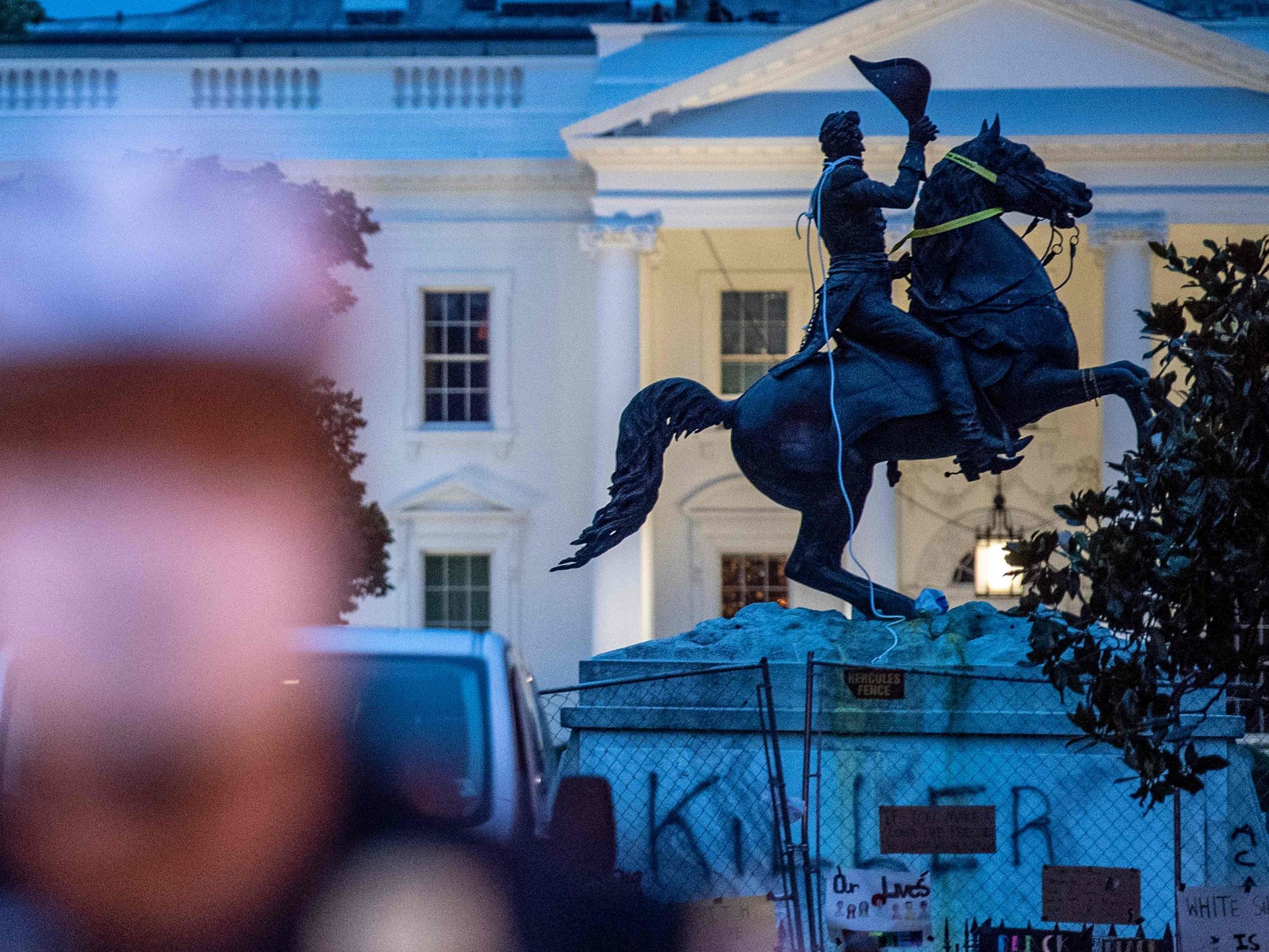Police cleared DC protesters with ‘excessive force’ before Trump photo op, officer says
National Guard officer contradicts administration’s versions of events

Your support helps us to tell the story
From reproductive rights to climate change to Big Tech, The Independent is on the ground when the story is developing. Whether it's investigating the financials of Elon Musk's pro-Trump PAC or producing our latest documentary, 'The A Word', which shines a light on the American women fighting for reproductive rights, we know how important it is to parse out the facts from the messaging.
At such a critical moment in US history, we need reporters on the ground. Your donation allows us to keep sending journalists to speak to both sides of the story.
The Independent is trusted by Americans across the entire political spectrum. And unlike many other quality news outlets, we choose not to lock Americans out of our reporting and analysis with paywalls. We believe quality journalism should be available to everyone, paid for by those who can afford it.
Your support makes all the difference.An Army National Guard officer who witnessed protesters forcibly removed from Lafayette Square last month is contradicting claims by the attorney general and the Trump administration they did not speed up the clearing to make way for the president's photo opportunity minutes later.
A new statement by Adam DeMarco, an Iraq veteran who now serves as a major in the DC National Guard, also casts doubt on the claims by acting Park Police Chief Gregory Monahan that violence by protesters spurred Park Police to clear the area at that time with unusually aggressive tactics. Mr DeMarco said that “demonstrators were behaving peacefully” and that tear gas was deployed in an “excessive use of force”.
Mr DeMarco backs up law enforcement officials who told The Washington Post that they thought the clearing operation would happen after the 7pm curfew that night – but it was dramatically accelerated after Attorney General William Barr and others appeared in the park about 6pm. Mr Monahan has said the operation was conducted so a fence might be erected around the park. Mr DeMarco said that the fencing materials did not arrive until 9pm – hours after Mr Barr told the Park Police to expand the perimeter – and that the fence was not built until later that night.
Mr DeMarco's account of events also reveals for the first time the details of the visit that General Mark Milley, chairman of the Joint Chiefs of Staff, made to Lafayette Square just before the move on protesters – and the warning he gave his troops.
Mr Milley, who had arrived in the park with Barr about 30 minutes before the clearing, warned Mr DeMarco to keep officers from going overboard. “General Milley told me to ensure that National Guard personnel remained calm, adding that we were there to respect the demonstrators' First Amendment rights,” Mr DeMarco said.
Mr Milley has since apologised for his presence in Lafayette Square, saying, “I should not have been there. My presence in that moment, and in that environment, created the perception of the military involved in domestic politics.”
Mr DeMarco is scheduled to testify Tuesday before the House Natural Resources Committee, which is investigating the government's actions in clearing protesters away from Lafayette Square with projectiles, gas, smoke and mounted police, including an apparent assault on Australian journalists by two Park Police officers. His statement was posted Monday on the committee's website.
Mr Monahan also is scheduled to testify. In a statement posted Monday evening by the committee, Mr Monahan says violence beginning 29 May outside the White House led to the decision to expand the perimeter with fencing that protesters could not scale. “The unprecedented and sustained nature of the violence and destruction associated with some of the activities in Lafayette Park and surrounding park areas immediate and adjacent to the White House required de-escalation,” and that the decision was made late on 30 May, the chief's statement says.
Mr Monahan said: “Once the fencing arrived, an on-the-ground assessment of the violence and danger presented by the crowd led to the clearing of the Park and the installation of the fence.” That conflicts with Mr DeMarco's claim that the fencing did not arrive until later that night.
“The hearing comes at an interesting time, during the protests in Portland and Seattle and the presence of both police and ICE in those areas,” said Rep. Raul Grijalv, D-Arizona, chair of the natural resources committee. “What happened at Lafayette Square was kind of a precursor to the escalations this administration is using, the using of federal law enforcement, the contemplation of use of the military in these communities.”
The Trump administration has said the clearing operation was planned in advance, and Justice Department spokesperson Kerri Kupec previously said, “No one voiced disagreement with that plan”. The White House has not commented on the timing of the operation, which started about 30 minutes before the 7pm curfew.
As police were clearing the area around Lafayette Square, Mr Trump began a short speech at the White House, and some of the small explosions from the park could be heard in the background. Mr Trump then walked with an entourage to the park, which is adjacent to the White House, and stood in front of St. John's Episcopal Church. He was photographed holding a Bible, did not make any remarks, and then walked back to the White House.
Barr said in a news conference on 4 June that he made the decision to expand the perimeter north of Lafayette Square.
“There was no correlation between our tactical plan of moving the perimeter out by one block and the president's going over to the church,” Mr Barr said.
The Justice Department did not respond to a request for comment Monday.
Washington Post
Join our commenting forum
Join thought-provoking conversations, follow other Independent readers and see their replies
Comments